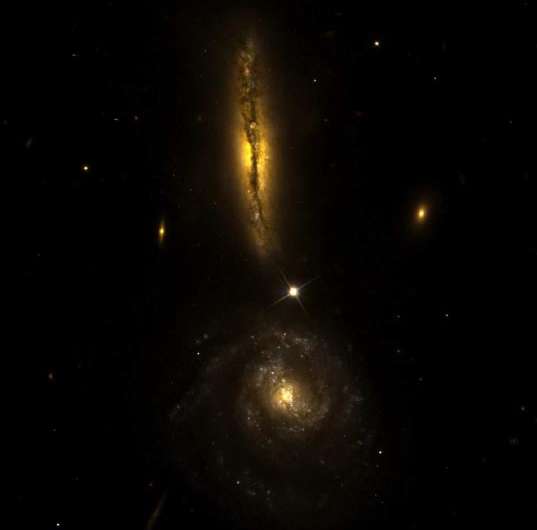The kinematics of merging galaxies

The unprecedented sensitivity of space telescopes has powered a revolution over the past decade in our understanding of galaxies in the young universe during its first billion years of existence. These primitive objects are so remote that their light has been traveling towards us for more than ninety percent of the age of the universe, but they could be detected by space observatories because they are intrinsically bright in the infrared. Their luminosity is almost surely the result of huge numbers of newly formed stars whose light warms the dust that then radiates at infrared wavelengths.
Do distant galaxies, the forebears of our current cosmic neighbors, make stars in the same way our galaxy does today? Astronomers are trying to unravel if and how galaxies in the early universe are different from local ones. In the local universe, starbursts and luminous infrared emission is often the result of the merger of two galaxies, and astronomers naturally suspect that the physics of mergers is also implicated in distant, luminous galaxies. The problem is that local mergers are readily identified as such because their morphologies display effects like disrupted structures, tidal arms, or bridges of material connecting the two galaxies. Distant objects are too far away to see these physical structures, however, and even ones that are somewhat closer would have features that are faint and hard to discern.
A collision between galaxies should disorder each galaxy's disk and disrupt the corresponding, systematic rotational motions. CfA astronomers Chao-Ling Hung and Howard Smith and their colleagues studied whether it was practical to use these "kinematic" effects to identify and classify distant mergers. The astronomers took twenty-four local, luminous mergers and artificially degraded their images to simulate their being far away (i.e., in the early universe). They then determined the internal motions via the Doppler effect in the emission lines of atomic hydrogen and nitrogen gas as it is appears across the image. (Recall that the Doppler effect is the apparent shift in the wavelength of a spectral line due to motion.) Their conclusions are that in some select situations (depending on the relative sizes of the merging galaxies and the stage of the merger) the kinematics does clearly reveal the presence of a merger, but for a high proportion of cases kinematics are not sufficient to identify mergers. Other merger indicators, for example as traced by the luminosity of temperature of the dust, are needed.
More information: "Kinematic classifications of local interacting galaxies: implications for the merger/disk classifications at high-z." Chao-Ling Hung, Jeffrey A. Rich, Tiantian Yuan, Kirsten L. Larson, Caitlin M. Casey, Howard A. Smith, D. B. Sanders, Lisa J. Kewley, and Christopher C. Hayward, ApJ 803, 62, 2015. arxiv.org/abs/1503.05191
Provided by Harvard University



















